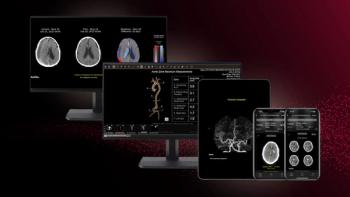
Coronavirus-Associated Pneumonia Identified with CT
Patients with the coronavirus who develop pneumonia exhibit similar findings on chest CT scans.
Patients who test positive for pneumonia associated with the coronavirus largely share several findings visible on CT scans. Knowing what symptoms will likely appear on these images can help providers recognize which individuals will need targeted treatment.
Together, radiology researchers from the Shanghai Public Health Clinical Center and the University of Michigan at Ann Arbor analyzed chest CT scans from patients who tested positive for coronavirus-associated pneumonia to determine what their images had in common. The results were published in the Feb. 6 issue of
To identify which findings in the lungs point to infection, investigators examined chest CT scans without contrast from 51 individuals who tested positive for the virus, identifying a total of 1,324 lesions. Of that group, 44 participants had 1,284 lesions involving both lungs, and 32 patients had 1,194 lesions involving four or five lobes. Additionally, 41 individuals had 1,179 lesions in the posterior area of the lung, and 44 people had 1,198 lesions scattered throughout the lung periphery.
While fever and cough were common symptoms, affecting 96 percent and 47 percent of patients, respectively, other blood work results were largely normal. The majority of affected individuals also shared additional symptoms, however. Taken individually, the CT scan results could point to several infections, including H7N9 pneumonia, H1N1 virus infection, SARS, coronavirus infection, or avian flu. However, collectively, they indicate a different scenario.
“These CT findings combined together, with predominant distribution in posterior and peripheral part of the lungs were uncommon in other virus pneumonia,” the researchers said.
Based on the data analysis, 87 percent of patients exhibited pure ground-glass opacity (GGO), GGO with thickening of the lung tissues, and GGO with consolidation. Seventy-seven percent of patients exhibited pure GGO, accounting for 30 percent of lesions, and 75 percent has tissue thickening, accounting for 39 percent of lesions.
Researchers divided the patients both by time of symptom onset and age. Patients scanned after more than four days from symptom onset showed more consolidation, as did patients over age 50. Greater consolidation was associated with disease progression, they said, noting that finding consolidation lesions could function as a flag in patient management.
Ultimately, the investigators said, if patients with coronavirus exposure who also have a fever and cough – but normal or decreased white blood cell counts – have GGO prominent lesions in the peripheral or posterior part of their lungs on CT scans, providers should highly suspect coronavirus-associated pneumonia.
Newsletter
Stay at the forefront of radiology with the Diagnostic Imaging newsletter, delivering the latest news, clinical insights, and imaging advancements for today’s radiologists.




























